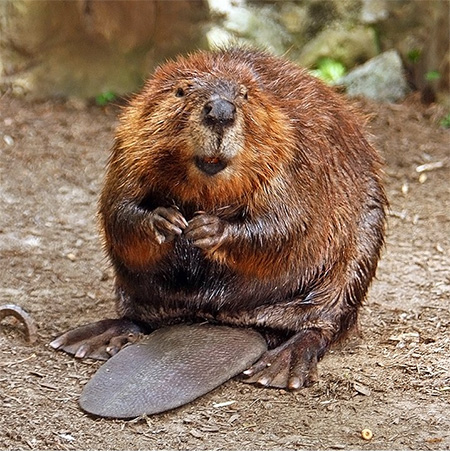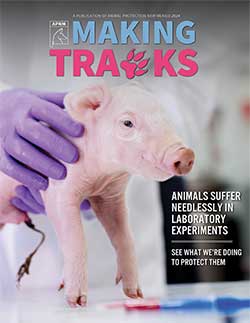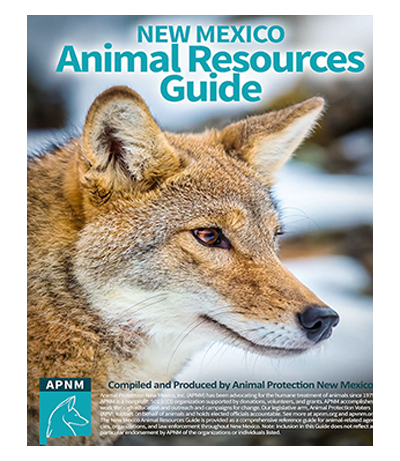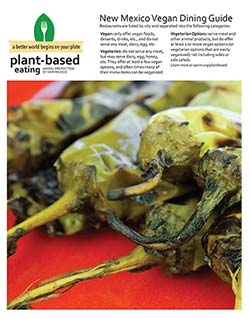 Beavers are second only to humans in their ability to alter the landscape. They require relatively deep water to carry out their daily activities, and will build dams if water levels are low. Conflicts between beavers and humans usually arise when dam building results in tree damage and flooding of property. However, killing or removing beavers from an area is often only a temporary solution. Removing problem beavers will just leave vacant territory for new beavers. In addition, traps commonly used to drown beavers are extremely inhumane. These animals can hold their breath for up to 15 minutes, and being deprived of oxygen is extremely painful for them. The key is to come up with a long-term solution that allows the beavers to remain where they are.
Beavers are second only to humans in their ability to alter the landscape. They require relatively deep water to carry out their daily activities, and will build dams if water levels are low. Conflicts between beavers and humans usually arise when dam building results in tree damage and flooding of property. However, killing or removing beavers from an area is often only a temporary solution. Removing problem beavers will just leave vacant territory for new beavers. In addition, traps commonly used to drown beavers are extremely inhumane. These animals can hold their breath for up to 15 minutes, and being deprived of oxygen is extremely painful for them. The key is to come up with a long-term solution that allows the beavers to remain where they are.
Humane Solutions for Flooding:
Install Water Flow Devices. Flow devices vary in cost and complexity, but they all serve the same purpose — to prevent flooding while allowing beavers to remain in the area and carry out normal activities. In certain circumstances, flow devices may encourage beavers to leave on their own. This result is much preferred over trapping and relocating, which often leaves the animals in unsuitable habitat or simply makes them someone else’s problem.
- The Beaver Deceiver and similar contraptions are designed to prevent beavers from clogging culverts with vegetation and flooding roads. These devices consist of wire mesh fencing, and are installed around culverts. Folding the wire mesh into an L-shape at the bottom will discourage burrowing. Keep in mind that different species of wildlife use culverts as safe passages under roads; consider leaving 10-12 inches between the fencing and one side of the culvert. A gap this size will help avoid animal-car collisions, but will not allow beavers to enter with large branches.
Links:
Please note that flow devices require some maintenance, and should be checked periodically for optimal performance.
Humane Solutions for Tree Damage:
Beavers are mostly interested in trees that are within 100 feet of the shore (the heaviest use occurs within about 20 feet), so refraining from planting ornamental trees along a shoreline will certainly reduce the occurrence of tree damage.
- Felled Trees: Leave trees down that are already down, or move them closer to the stream bank.
- Cylindrical cages: This method is excellent for saving expensive trees. Make cages of hardware cloth or 2 x 4″ welded wire fencing, about four feet high. Encircle the trunk, leaving about six inches of space between the tree and the fence. Cut every other horizontal wire and bend into hooks to connect with the other side. Cages can be anchored to the ground with stakes. Wrapping a tree too tightly will interfere with its ability to grow.
- Paint with sand: This is a relatively new method that discourages beavers from gnawing. It entails coating tree trunks with a sand/paint mixture. Add 8 ounces of fine sand (30 mil, 70 mil, or mason sand) to one quart of exterior latex paint. Stir often and paint the bottom four feet of the trunk. The paint can even be color-coded to match the trees. Avoid painting young trees less than six feet tall.
- Cayenne Pepper: Vegetable or mineral oil infused with cayenne pepper and then painted on the tree trunks has been reported as an effective means of preventing beaver chewing.
- Low fences: Low fences can be used to protect groups of trees. Since beavers do not like being separated from water, it is unnecessary to enclose an entire stand of trees. Simply stake the fence tightly against the ground and trail each end toward the water. An L-shaped bend in the bottom of the fence will discourage burrowing. It may be necessary to monitor the fence for a while after it’s installed.
- Repellent on Young Trees: A year-long trial to protect hundreds of restoration trees with a combination of “4 the Birds,” or “Birds Away,” and sand was completely successful, according to biologist and beaver consultant Mary Tappel. The sticky substances were applied discontinuously about four feet up the trunks of the saplings and then sand was added. This method is not suitable for older trees, where trunk-climbing birds might be harmed.





